Paddling on flooded rivers - in kayak, canoe or on a SUP
Once the UK summer months disappear and the nights draw in, our paddling opportunities - whether in kayak, canoe or on a SUP, can become more challenging.
Colder temperatures and increasing river levels give rise to different and sometimes difficult paddling trips.
As rivers flood, which can look exciting from the bank, it creates new hazards and entrapment situations which we must be aware of.
When paddling on flooded rivers, we have to be prepared!
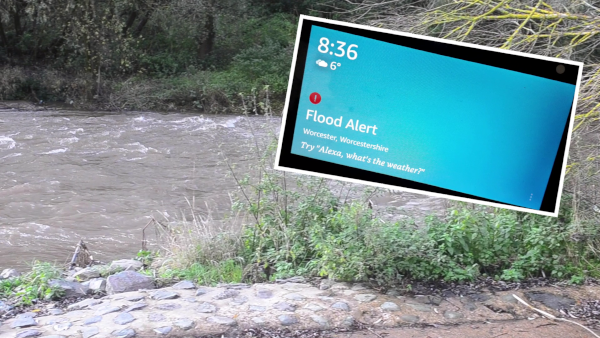 Alexa warning of impending river floods with flooded river behind
Alexa warning of impending river floods with flooded river behindHere's the same section of river in normal, medium and high floods. You can see the clear difference in levels with the medium (number 2) level probably being the more challenging of the three levels.
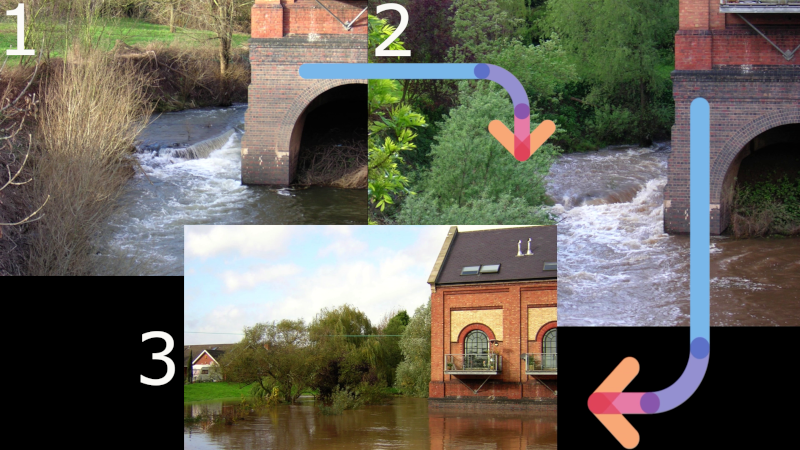 The same section of river with three levels of water
The same section of river with three levels of waterOn this page, we'll look at some of the hazards and dangers found on a flooded river.
Read to the end for my 7 top tips for paddling on flooded rivers.
Hazard Number 1 - Faster Flows
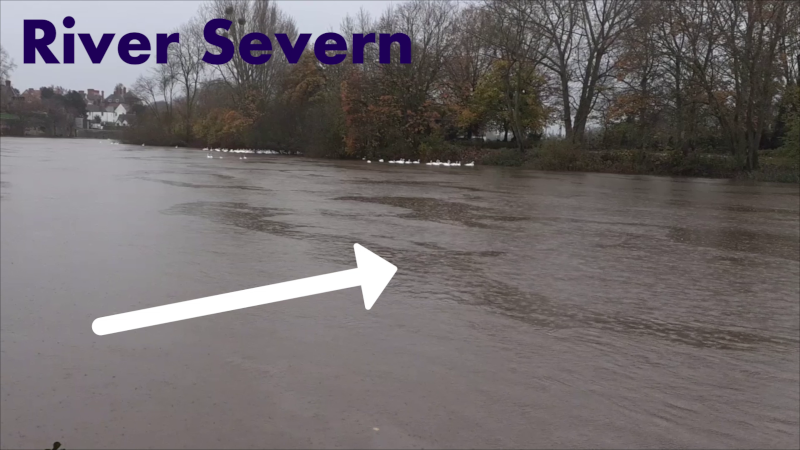 River Severn in flood (Dec 2022) showing faster flow rate in middle
River Severn in flood (Dec 2022) showing faster flow rate in middleAn obvious one to start with. As the water levels rise, more water is trying to pass down the river and the flow speeds up.
Paddling upstream may become difficult or even impossible. Travelling downstream becomes faster and obstacles in the river arrive quicker than before.
Paddling techniques needs to anticipate the faster flow and allow for this when navigating the river, obstacles and the get in and get out points.
Hazard 2 - Debris
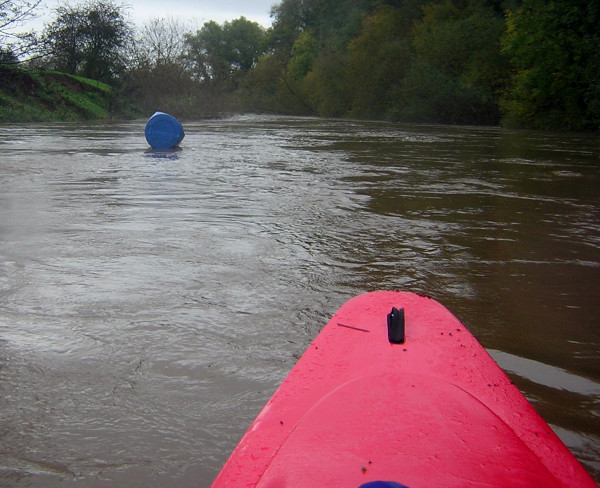 A blue barrel on it's merry way to the sea
A blue barrel on it's merry way to the seaThe level of the river against the banks increases and this can catch and drag down debris into the main flow of the river.
It's not unusual to see branches, barrels (see photo above), trees, garden chairs and other interesting items floating down the river.
(Here's a video where we found a canoe paddle: Watch Now)
These items can crash into you and cause you to capsize and/or injure you.
See the video below for Dave paddling in the Worcester floods and onto the Malvern Road!
Hazard 3 - Entrapment
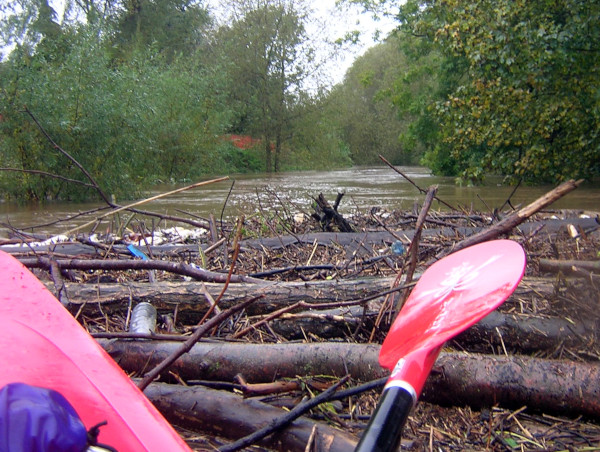 A serious entrapment hazard on the river Teme
A serious entrapment hazard on the river TemeWith the level of the river higher, obstacles that were previous away from the water are now in the water.
The flow of the water against and around these obstacles can create some very dangerous entrapment situations.
Water flowing around a tree trunk will have a higher pressure of flow against the tree trunk. A kayak, canoe or SUP stuck against this could be very difficult to recover.
Entrapment of your body or limbs is also a possibility especially in tree branches at water level.
Larger debris such as tree trunks can become trapped across the river blocking either all or some of the way through - as in the photo above. The risk of capsize and being dragged under the debris is a real risk.
These are extremely dangerous hazards and ideally will need to be portaged.
Sometimes it is tempting to 'boof' over a tree trunk especially if it is level with the water. You should do this with care and always have a rescue plan in place should things go wrong.
Hazard 4 - Higher River Banks
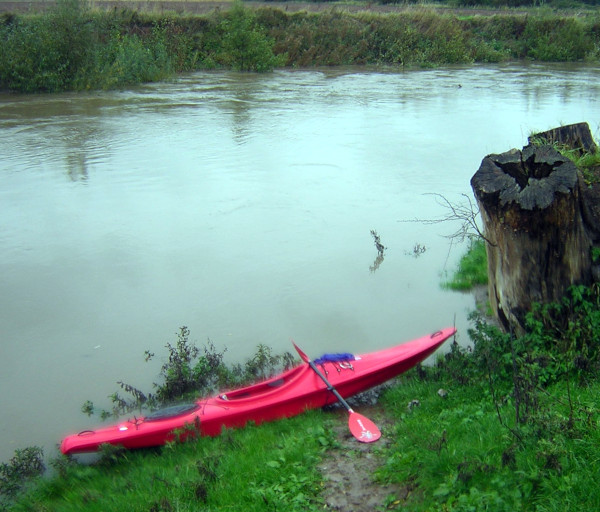 Slippery banks and high banks on the far side
Slippery banks and high banks on the far sideGetting in and out at normal levels may be easy due to access to pontoons and steps.
As the river level rises, these access points may be underwater or in positions that are no longer usable.
With changing river levels, you could be cut off and unable to exit the river especially in a canoe or SUP.
In an emergency, for instance during a swim, exiting the river could be slippy, difficult and tiring.
Hazard 5 - Colder Water
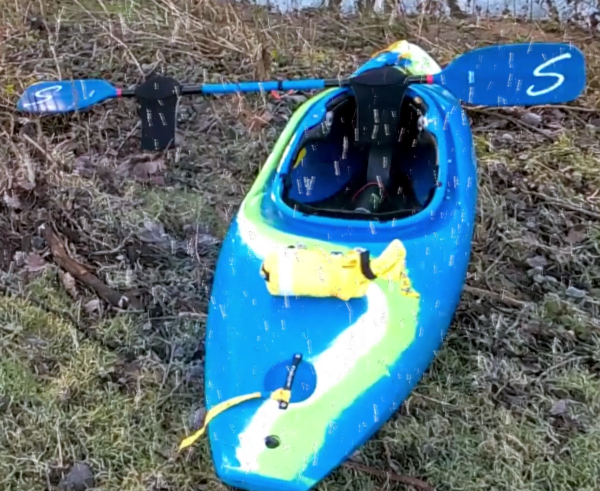 Snow falling at the put in by Leigh Brook
Snow falling at the put in by Leigh BrookFlooded rivers are mostly seen in the colder months (in the UK anyway). The water temperature will be colder and the air temperature may not be much warmer.
A swim in these conditions can move into a dangerous situation very quickly. Wearing suitable clothing including a dry suit helps to minimise this.
Hazard 6 - Water Quality
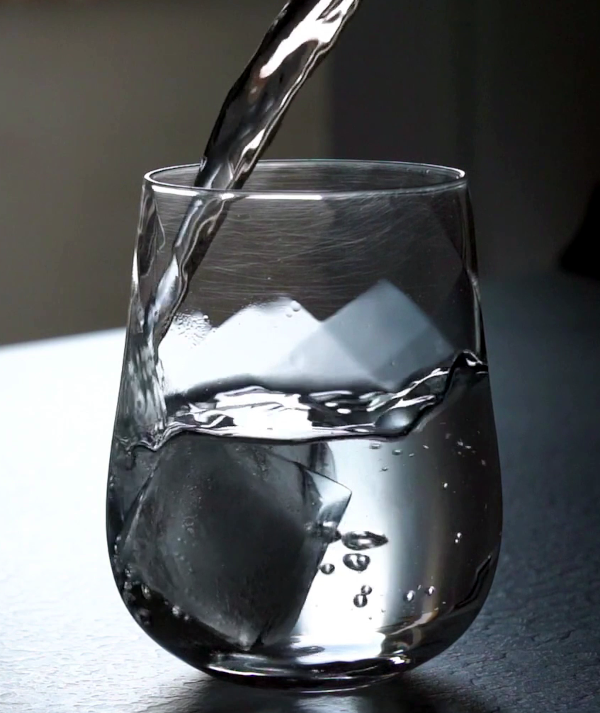 Pure water - not what you paddle in on the river!
Pure water - not what you paddle in on the river!River water is not the freshest at the best of times. When the water level increases, there are extra contaminants collected in the river water from higher up the banks and in the fields.
These contaminants discolour the water and could contain infection, poisons and faeces.
Swallowing these or allowing prolonged skin contact can cause illness.
Hazard 7 - Disorientation
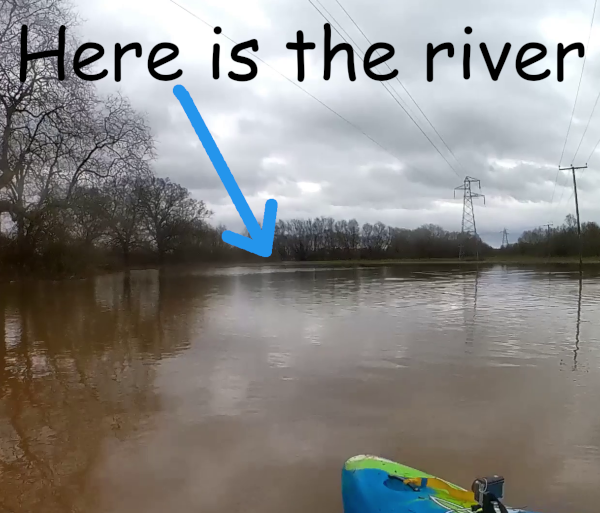 A flooded field with the actual river in the distance
A flooded field with the actual river in the distanceHigher water levels especially where the water has broken the banks of the river creates a completely new landscape. Water could stretch over fields (see photo above and this video: Watch Now), roads or into other rivers and lakes.
Routes that were easy to see before could become unrecognisable and perhaps impossible to paddle.
As you are paddling, you can easily go off course which may lead you into dangerous areas or situations. Recovering back on track takes energy and time.
Hazard 8 - Currents and Whirlpools
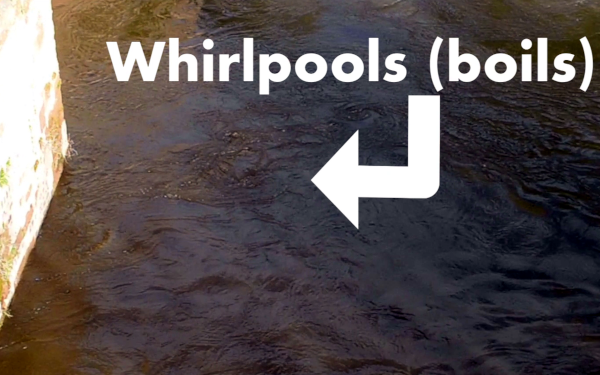
Faster flows create strong currents and whirlpools especially around obstructions. Being aware of these, and avoiding them where you can, is safer than trying to paddle through them.
Whirlpools do have the potential to tip over your craft which could result in a swim.
Hazard 9 - Underwater Hazards
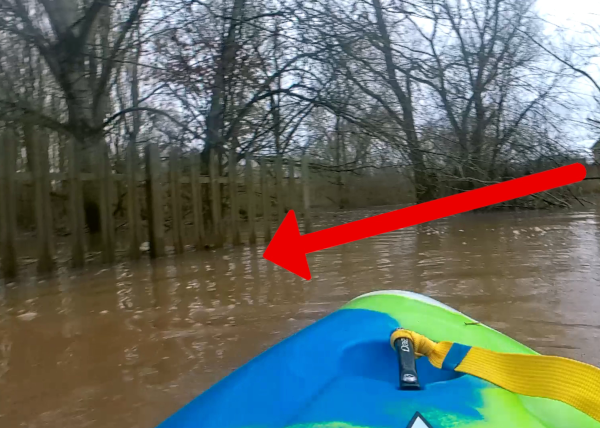 This fence is not normally a water hazard - except when the river is in flood
This fence is not normally a water hazard - except when the river is in floodHazards that were normally land based and not on your radar to avoid can become obstacles for you.
Fencing, walls and other architectures can sit beneath the river surface and can create extra currents, whirlpools or entrapment hazards.
Fencing (barbed wire in particular) creates a nasty hazard and should be avoided at all times.
Hazard 10 - Changing Levels
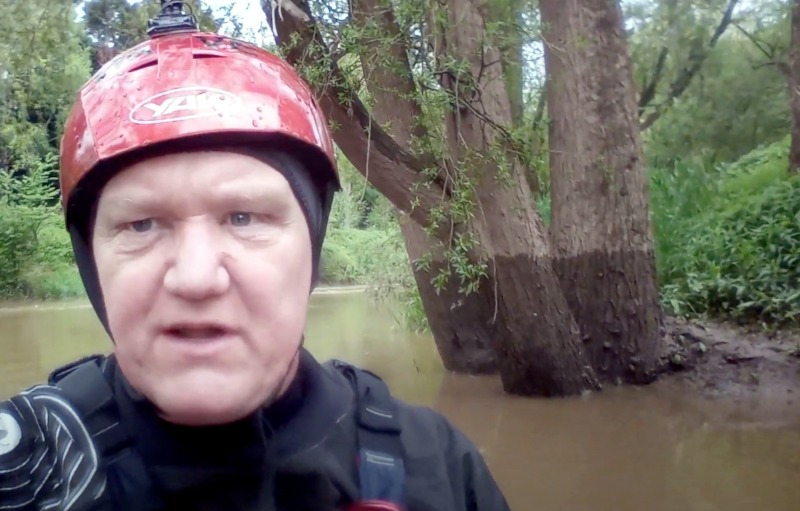 The water level on the tree shows how much the river has dropped - overnight as well
The water level on the tree shows how much the river has dropped - overnight as wellPaddling on flooded rivers over even a short period of time can see changing water levels - either rising or falling.
This can produce a changing landscape as the trip progresses. It's best to keep a constant review of river levels and make decisions on whether to carry on or not.
Let's finish with 7 top tips when paddling on flooded rivers.
- Inspect the river before and continually during your trip
- Know your route and use maps/GPS to ensure you are in the correct and safe area
- Take all the equipment you need including throw lines and extra clothing
- Tell someone where you are going and leave your exact route
- Make the right decision to paddle or not
- If in doubt, portage any obstacles.
- Wash your kit and yourself after your trip
Have fun and always stay safe.
See the video 'Paddling on flooded rivers':
PS. Paddlesports can be dangerous.
Read our safety disclaimer - here

New paddling inspiration, tip, trip or technique video EVERY week! Watch Ed, Dave and Moo on their kayaking, canoe and SUP adventures. It's all about safely having fun on the water. 200,000+ views, 110+ videos & 900+ subscribers so far! Click below to start watching:
Ed & Dave Kayaking Youtube Channel
WANT TO HELP US?
We really value your visit to us today. We run this website and our Youtube channel to provide paddling inspiration, tips, trip and technique content to you. We love being out on the water! If you enjoyed your visit, you can support us by using the links below:
Buy us something on our wish list
Thank you
NEED WEB HOSTING?
We recommend IONOS. Great service, technical support and stable hosting. Click the link below to find out more:
IONOS Web Hosting - RECOMMENDED!



